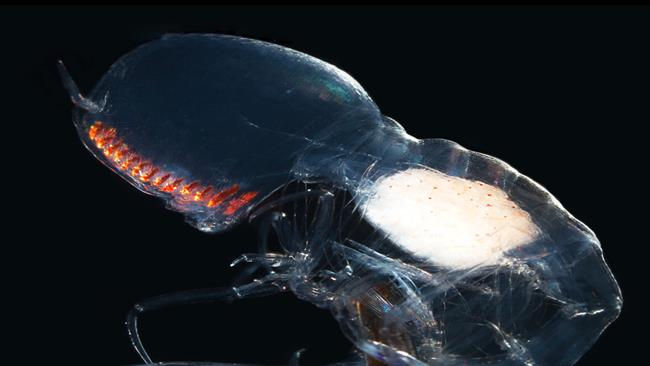
Researchers say that the eyes of a type of a tiny deep-sea crustacean are comprised of two rows of 16 distinct red retinas to see better in the dark.
According to Smithsonian Science website, a detailed study into the marine crustacean Paraphronima gracilis’ unique eye was published in the Current Biology journal on Thursday, by its lead author Jamie Baldwin Fergus.
“We have never seen the retina split up this way in any other arthropod eye, not in insects, not in crustaceans or other animals with a compound eye,” said Fergus, from the Smithsonian’s National Museum of Natural History.
The new research shows that the amphipod’s two large eyes, that envelope its head like a space helmet, are compromised of a total of 32 different retinas– the light-sensitive part of eye.
The research, which was co-authored by Karen Osborn of the Smithsonian’s National Museum of Natural History and Sonke Johnsen of Duke University, hypothesize that each retina captures an image which is sent to the transparent crustacean’s brain, which goes on to integrate all the images to increase brightness and contrast sensitivity.
“The neat thing about their eyes is that by grouping the light signal from multiple facets, they can see in extremely dim light. The really unique thing about their eyes is that they group the light signal in a way that means they don’t have the typical large loss in resolution–ability to distinguish details–that all other animals who group light signals to see in the dark do,” said Osborn.
P. gracilis lives at a depth of 150 to 500 meters off the coast of California, in an environment that is completely dark to the human eye. As it moves its eyes are positioned upward, searching for its prey which are a kind of transparent creature called siphonophores that swims above it.
The scientists say additional experimentation is required to unlock the mysteries about the structure and function of these animal’s unique eyes.







